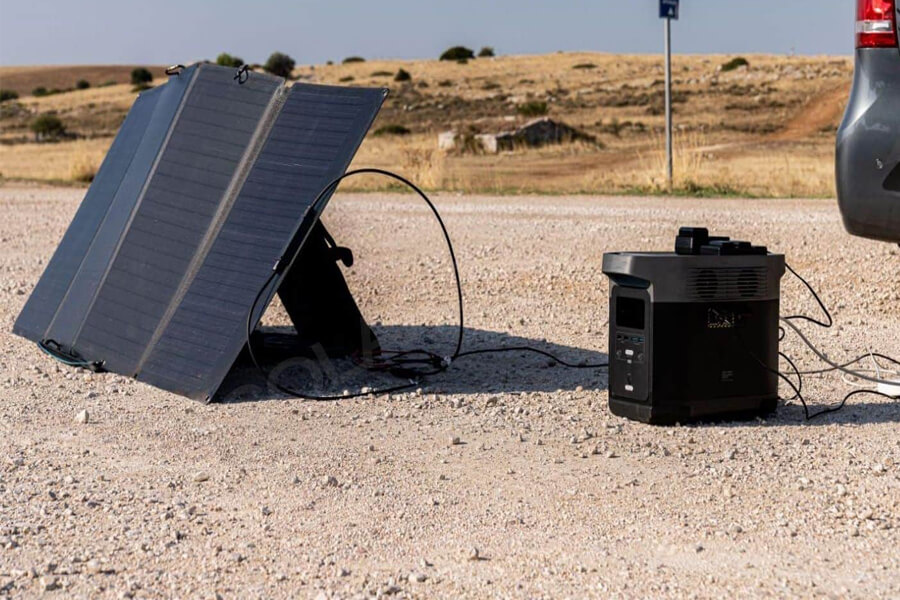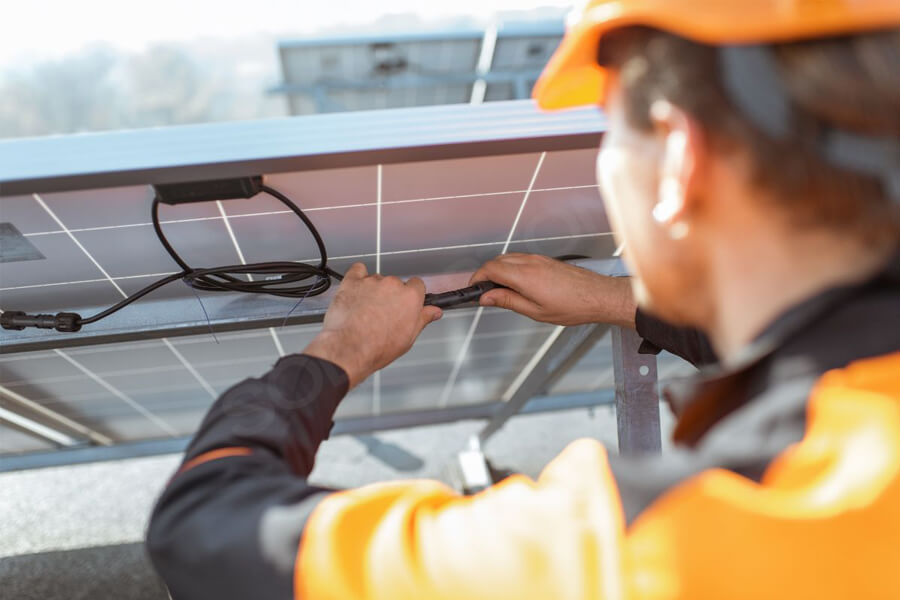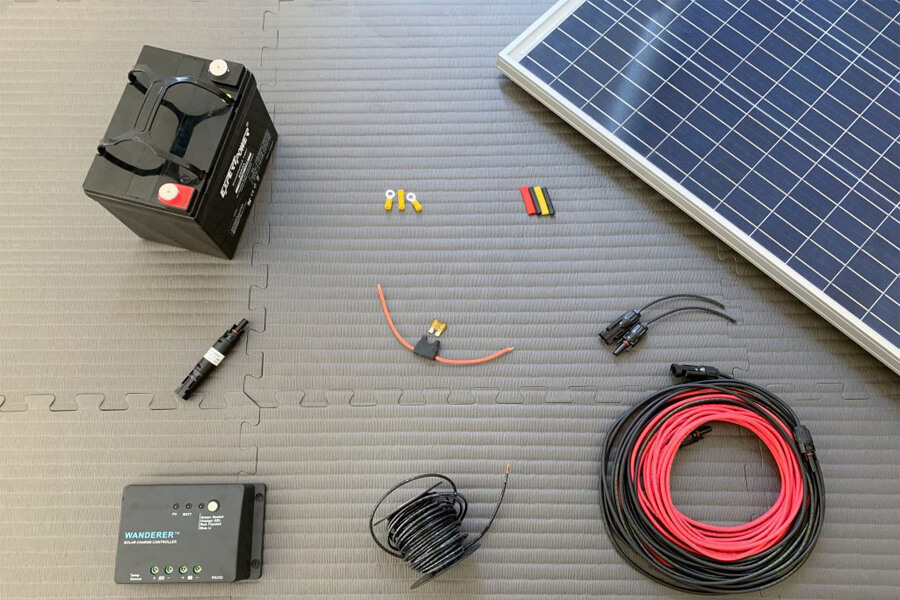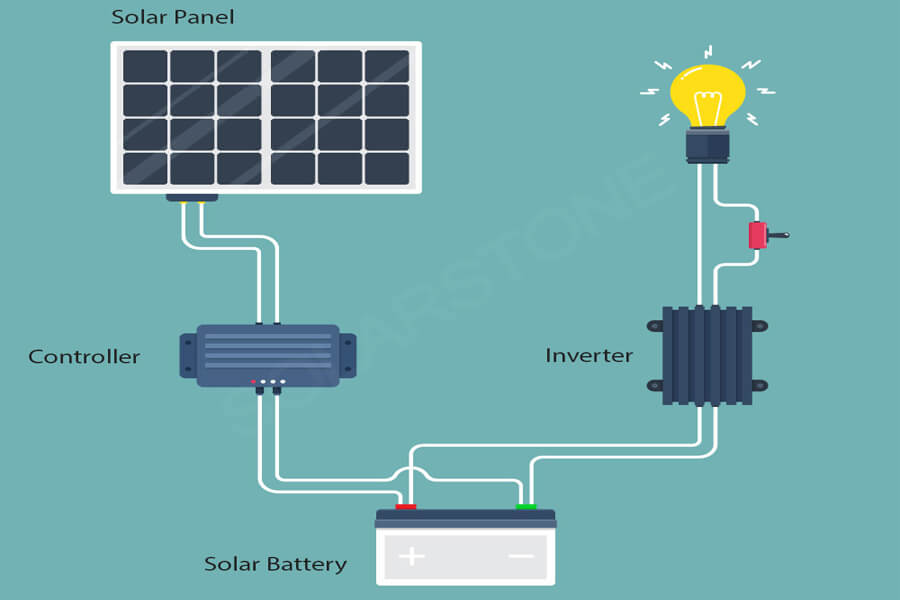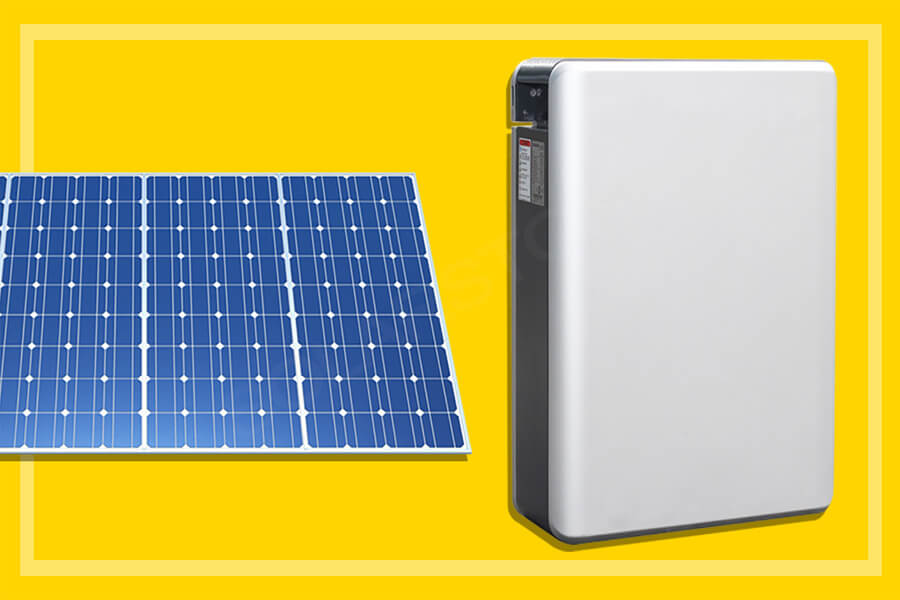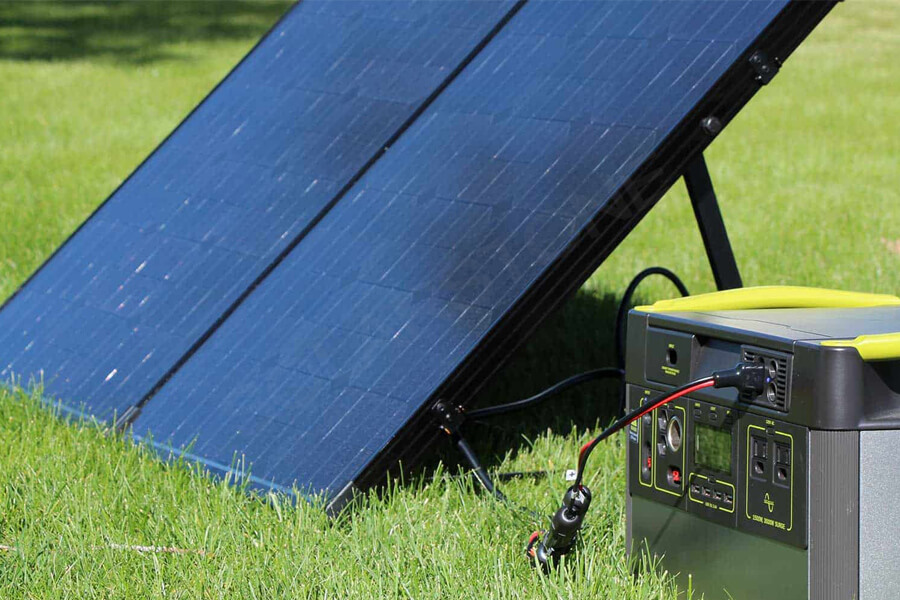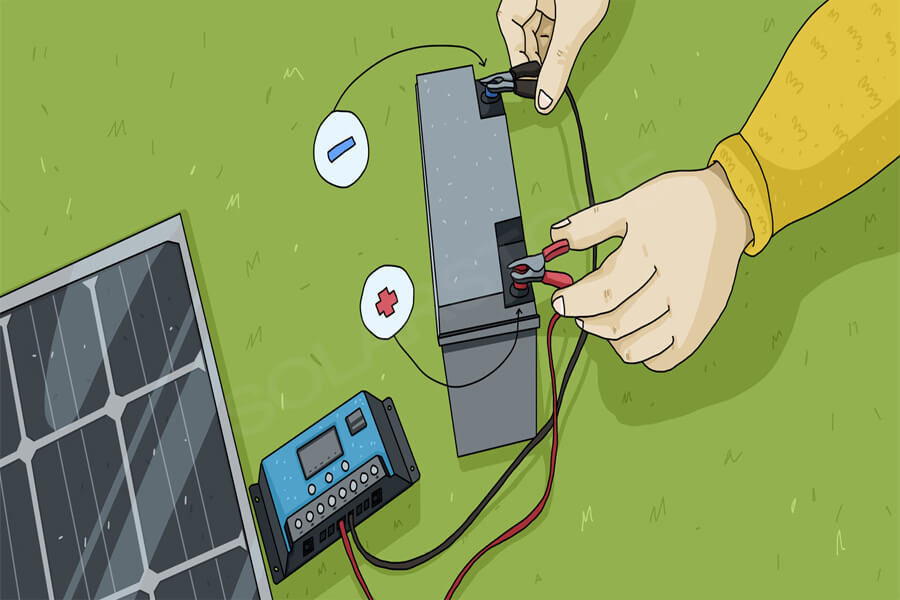Maximum power of solar panel Pmax=open-circuit voltage × Short-circuit current, which is their ideal power, and usually we measure the rated power of solar panels Pm. In practice, the rated power is less than the maximum power, mainly because the output efficiency u of the solar panel is only about 70%.
Due to the different light intensity in use, the power at different times is also different. According to the experimental data, its actual average power P=0.7Pm. If the solar panel needs to drive the load directly and make the load work stably for a long time, the rated power of the load is Pr=0.7Pm. If the power of the solar panel is selected according to the power of the load, the power of the solar panel is: Pm=1.43Pr. That is to say, the power of the solar panel is 1.43 times of the load power.
When selecting the power of the solar panel, the power consumption of the load should be reasonably selected, so that the power generated and the power consumption can be in a balanced state. Of course, the power generated by solar panels will also be restricted by many factors, such as season, climate, geographical environment and lighting time.
Use of storage battery (here only take summer as an example to introduce the use of solar panel and storage battery in general conditions)
The battery is a container for storing electric energy, and is often used as the “energy base” of other circuits. Because the power generated by solar panels is limited, the storage capacity of the “base” should be expanded as much as possible, but it cannot be expanded indefinitely, because solar panels can only generate electricity in the daytime, and its daily power generation M=power generation (maximum output power) × Effective illumination time × Power generation time, so its daily energy is equal to the product of output current and effective illumination time, that is, C=IH (Ah).
The capacity of the battery is the product of the discharge time and the discharge current, so the calculation formula is: C=IH (unit Ah, that is, the rated 1A current discharge for one hour). How to calculate the capacity and power of solar panels and batteries? We can evolve from the electric power formula: P=IU to: P=Iuh/h=CU/h.
The capacity of the battery can be calculated according to the above formula. In order to be more accurate, the charging efficiency of the battery should also be considered. The charging efficiency of the battery is generally between 65% and 80%. The charging efficiency depends on the charging mode, that is, the charging rate and the utilization rate of the active substances in the battery.
The general experience is that the charging efficiency is selected according to the charging time rate and current rate. The longer the charging time, the lower the current, the higher the safe conversion efficiency of electric energy, and the higher the compensation value; The shorter the charging time, the greater the current, the lower the conversion of safe electric energy.
For example, there is a solar panel with monocrystalline silicon, the maximum output power Pm (rated power) is 25W, the peak voltage (rated voltage) Ump is 17.2V, the peak current (rated current) is 1.45A, the open circuit voltage is 21V, the short circuit current is Isc is 1.5A, and the effective illumination time in a certain area is 12 hours. Calculate the power generation of the solar panel in a day and the required battery capacity.
It is known that Pm=25w, h=12h, U=17.2V, the power generation efficiency of solar panel is u=0.7, and the compensation value of battery is n=1.4
Power generation of solar panel: M=Pm × h × u=25 × twelve × 0.7=210W
According to the appeal formula: C=Ph/U=25 × 12/17.2=17.44Ah
Then the effective capacity of the actual battery should be above C=17.44/1.40=12.46Ah
So in practice, we can choose a battery with a capacity of about 14Ah.
Due to the difference in geographical latitude between the southern and northern regions of China, the sunshine time in summer and winter can be calculated according to the following formula: H=12 ± 0.09 ɡ, H is the sunshine time, 12 is the average sunshine time, and 0.09 is the difference of longitude and latitude in geography ɡ Indicates the geographic latitude of the location,+in summer and – in winter.
The lighting efficiency is generally about 0.8 in summer, 0.7 in spring and autumn, and 0.5~0.6 in winter, so the effective lighting time is: h=H × Lighting efficiency.
Connection of battery and solar panel
At present, there are many types and specifications of solar panel products, including 6V, 12V and 24V batteries. So how to connect the solar panel with the battery?
Generally, the rated output voltage of the solar panel is 1.3~1.5 times higher than that of the battery, which is determined by the charging efficiency of the battery. Because the charging of the solar panel does not have the same choice as charging the battery with the mains power, and the power fluctuation is relatively large when charging the battery, which needs to consider the cost of the solar panel first.
If the charging time rate of the battery is C10 and the charging compensation value is 1.4 times, the voltage of the solar panel that should be selected for a battery with a rated 12V voltage should be 12V × 1.4=16.8V, which is close to the limit charging voltage of the battery. The same is true for charging mobile phone batteries with solar panels. The higher the charging voltage is, the greater the charging power will be, and the other charging time and charging compensation value will need to be calculated separately.
When the solar panel and battery are charged in parallel, attention should also be paid to prevent the trees and buildings from illuminating the light of the solar panel, or the solar panel cannot generate electricity in overcast days and at night. Therefore, a rectifier diode must be connected in series in the circuit to prevent the battery from discharging the solar panel reversely when the voltage drops or does not generate electricity. When using the diode in parallel, attention should be paid to selecting the same internal resistance.
For high-power solar cell modules (small power is exempted), in order to prevent some of the solar cell panels from being blocked under strong light and causing serious heat damage to the load due to lack of illumination, it is better to parallel a bypass diode at the two poles of the output end of the solar cell module, and the current value of the bypass diode cannot be lower than the current value of the solar cell module.


